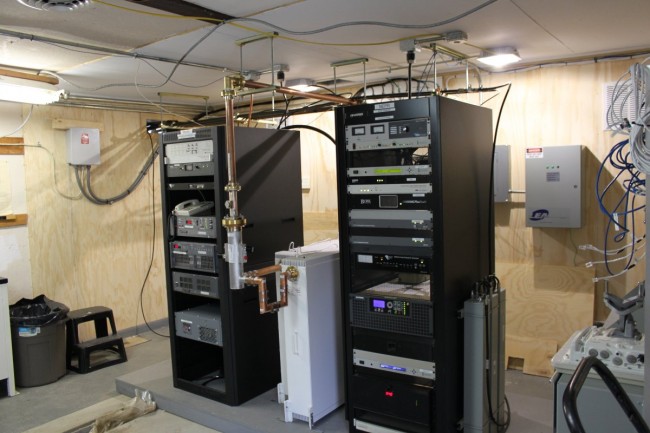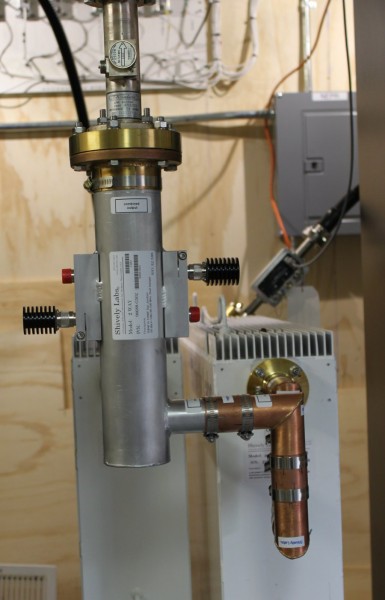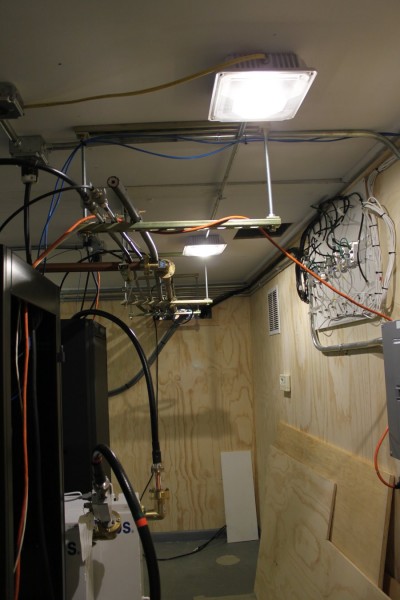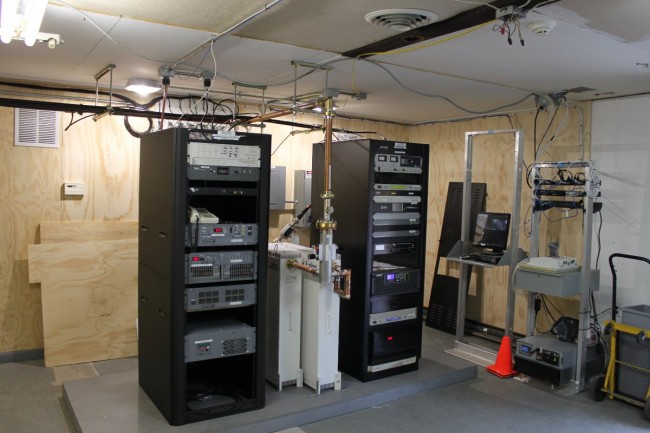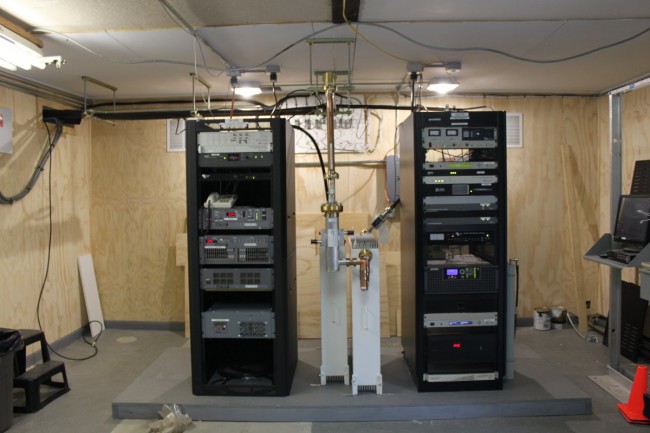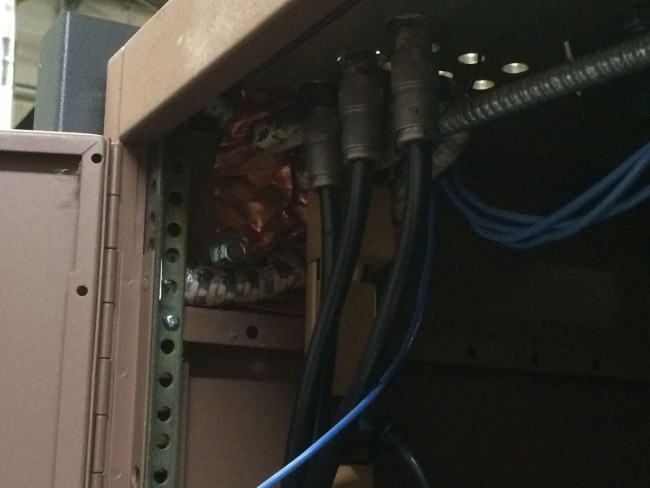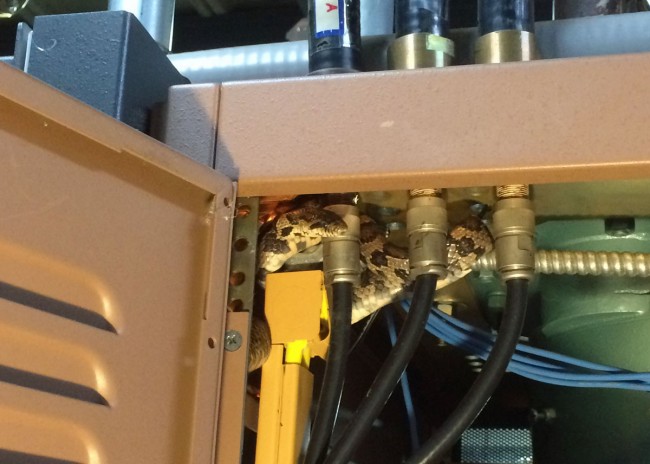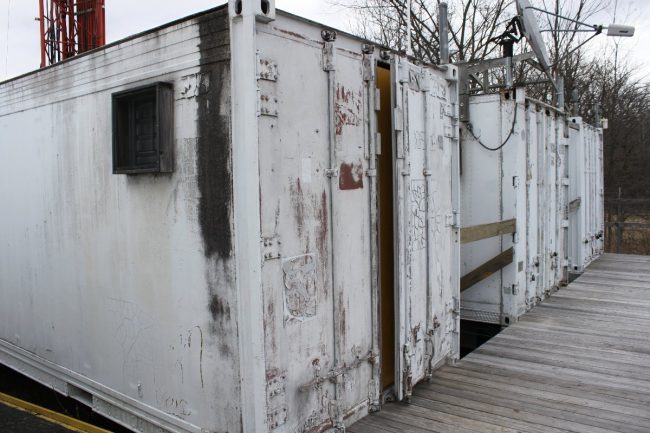
I do not particularly like these. I know, they are relatively inexpensive, easy to come by, easy to install, etc. However, a shipping container was not designed to house a transmitter, they have certain drawbacks. These are, in no particular order:
- Air conditioning. Using a traditional Bard-type equipment shelter HVAC unit requires cutting through a lot of fairly heavy gauge steel. What’s more, the steel walls are uneven, requiring a filler.
- They are by necessity, fairly narrow. Arranging racks and transmitters along the length of the unit restricts access to either the front or the back of the equipment. Meeting NEC clearance requirements for electrical panels, transfer switches, and disconnects can pose problems.
- They are not very tall. Mounting overhead equipment can be problematic as one does not want to drill through the top of the container. Crosswise unistrut is one solution, but it lowers the overhead considerably.
- Electrical work is slightly more dangerous. Doing any kind of electrical work, troubleshooting, repairs, etc is a little more nerve-racking when everywhere around you is a metal surface at ground potential.
- They are difficult to insulate against cold and heat.
- The door-latching mechanisms bind, wear out or otherwise fail over time.
All of those things being said, I am now rebuilding a transmitter site in one of these shipping containers.
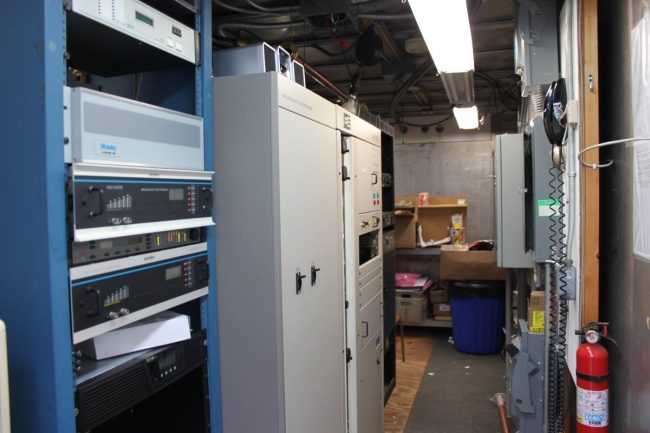
Fortunately, the original electrical work was not bad. The transmitter is a twenty-year-old BE FM10B, which will be retained as a backup. The new transmitter is a Gates Air FAX-10. We have installed several of these Gates Air transmitters in the last two years or so and they seem to be pretty solid units. This is the second 10KW unit I have installed.
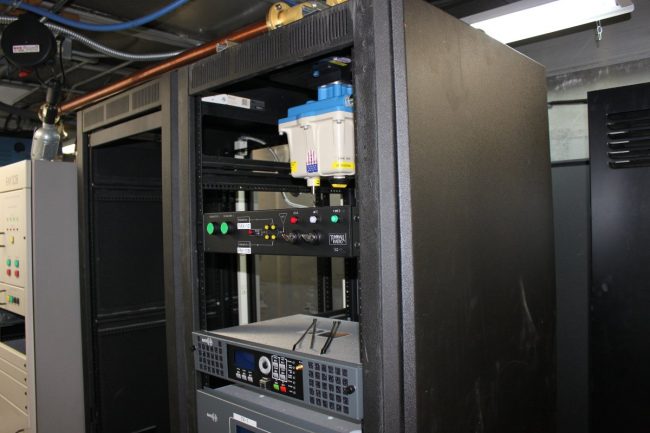
We decided to install the FAX-10 in a Middle Atlantic rack since we did not have a whole bunch of extra room for a separate transmitter rack. The 1 5/8 inch coax switch is installed in the top of the transmitter rack along with a Tunwall TRC-1 switch control unit. The other rack will have the STL and all other ancillary gear. My idea is to have nothing in between the door and the FM10B so it can be easily removed when that day comes. Something, something about planning ahead since it will be likely myself removing the FM10B.

